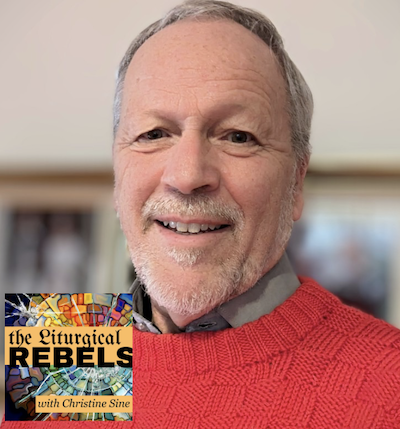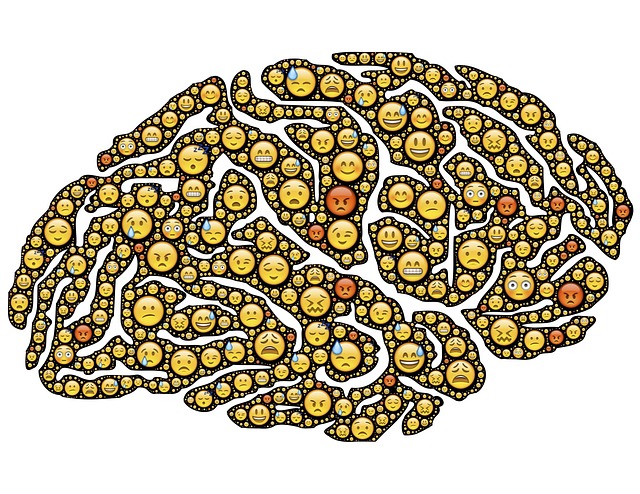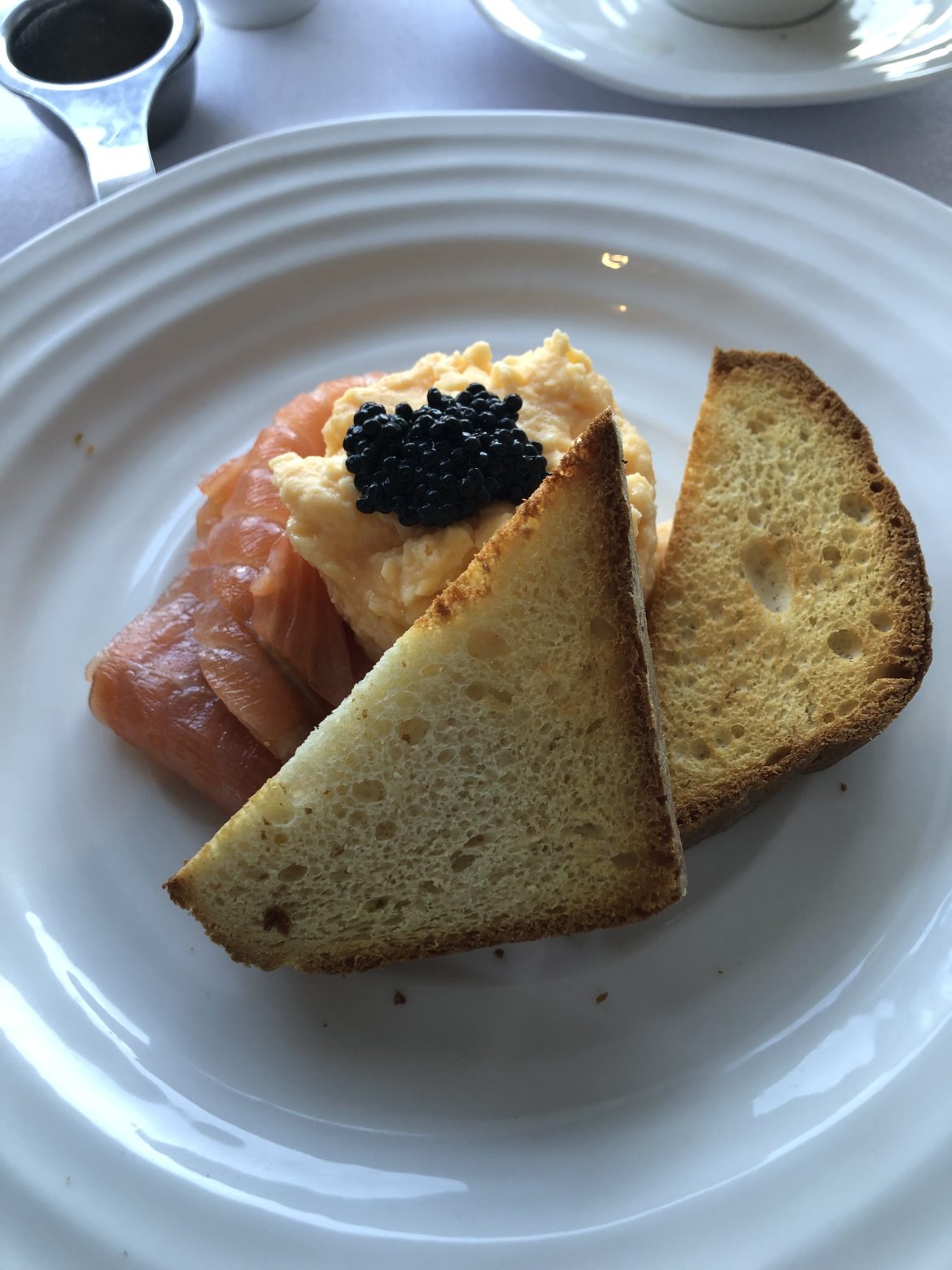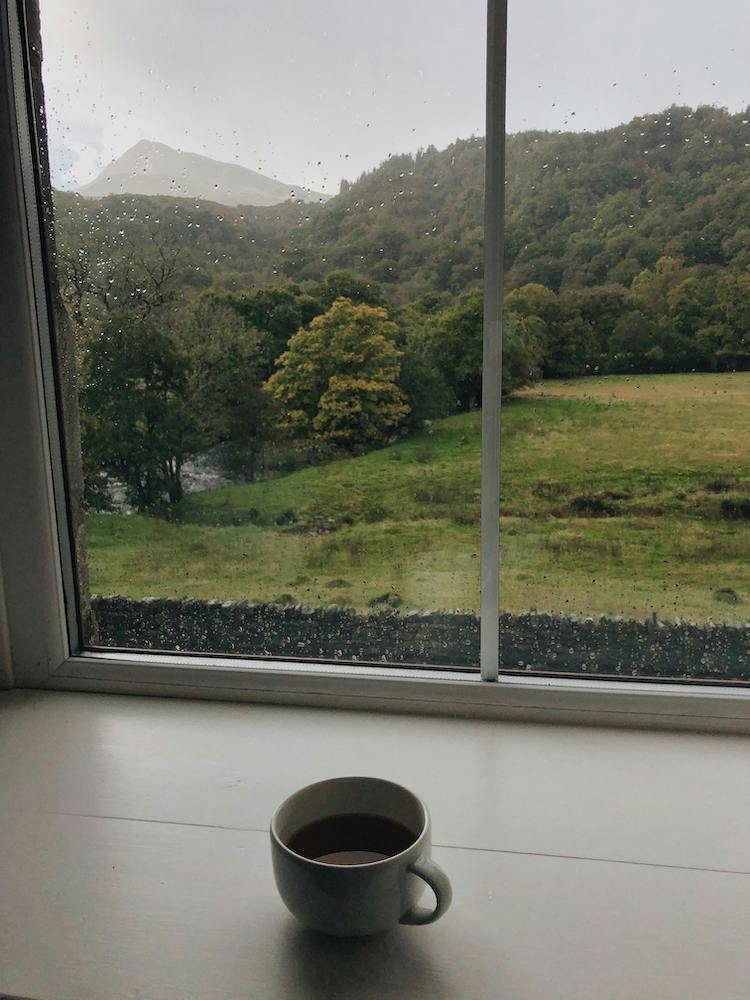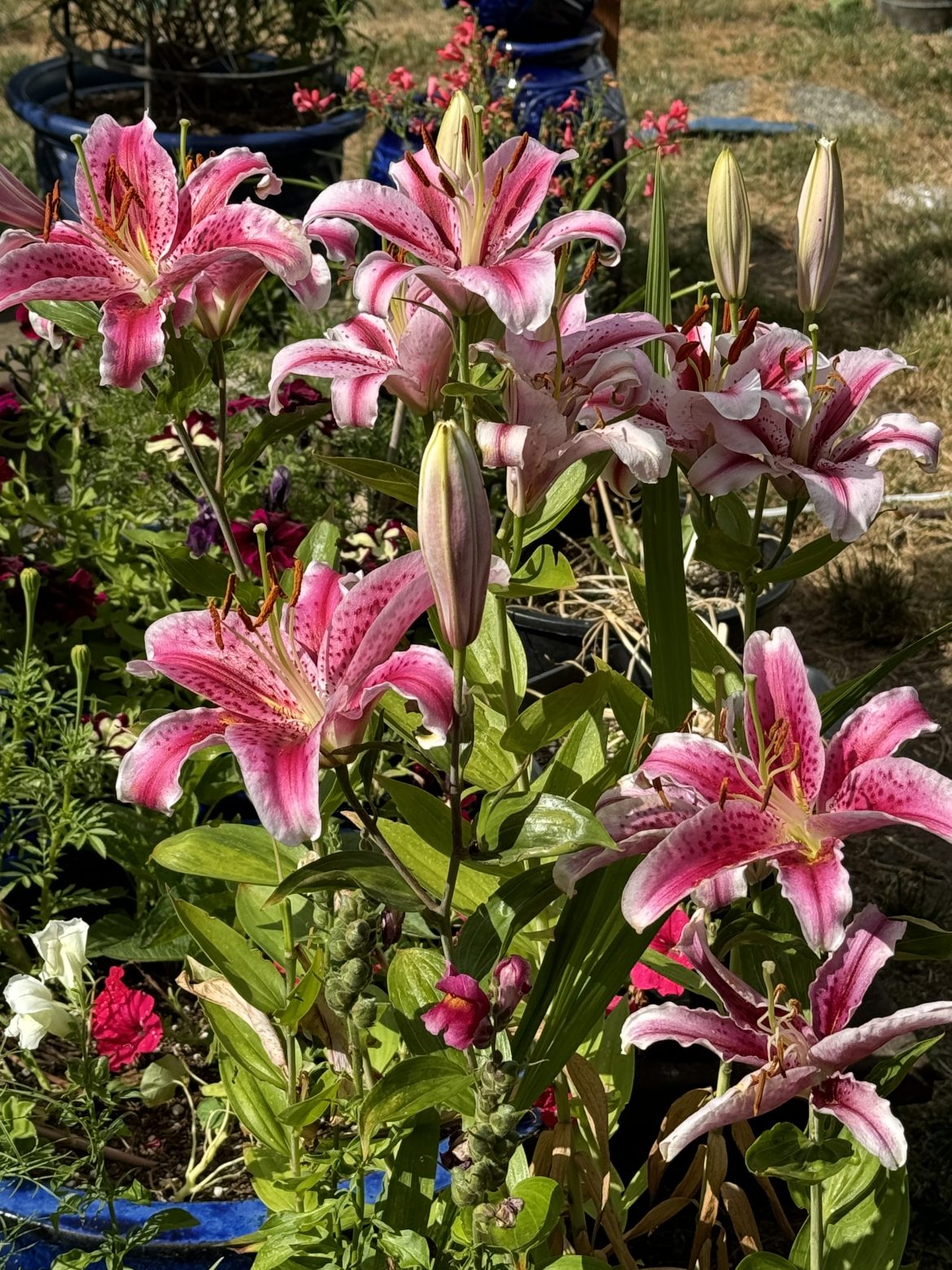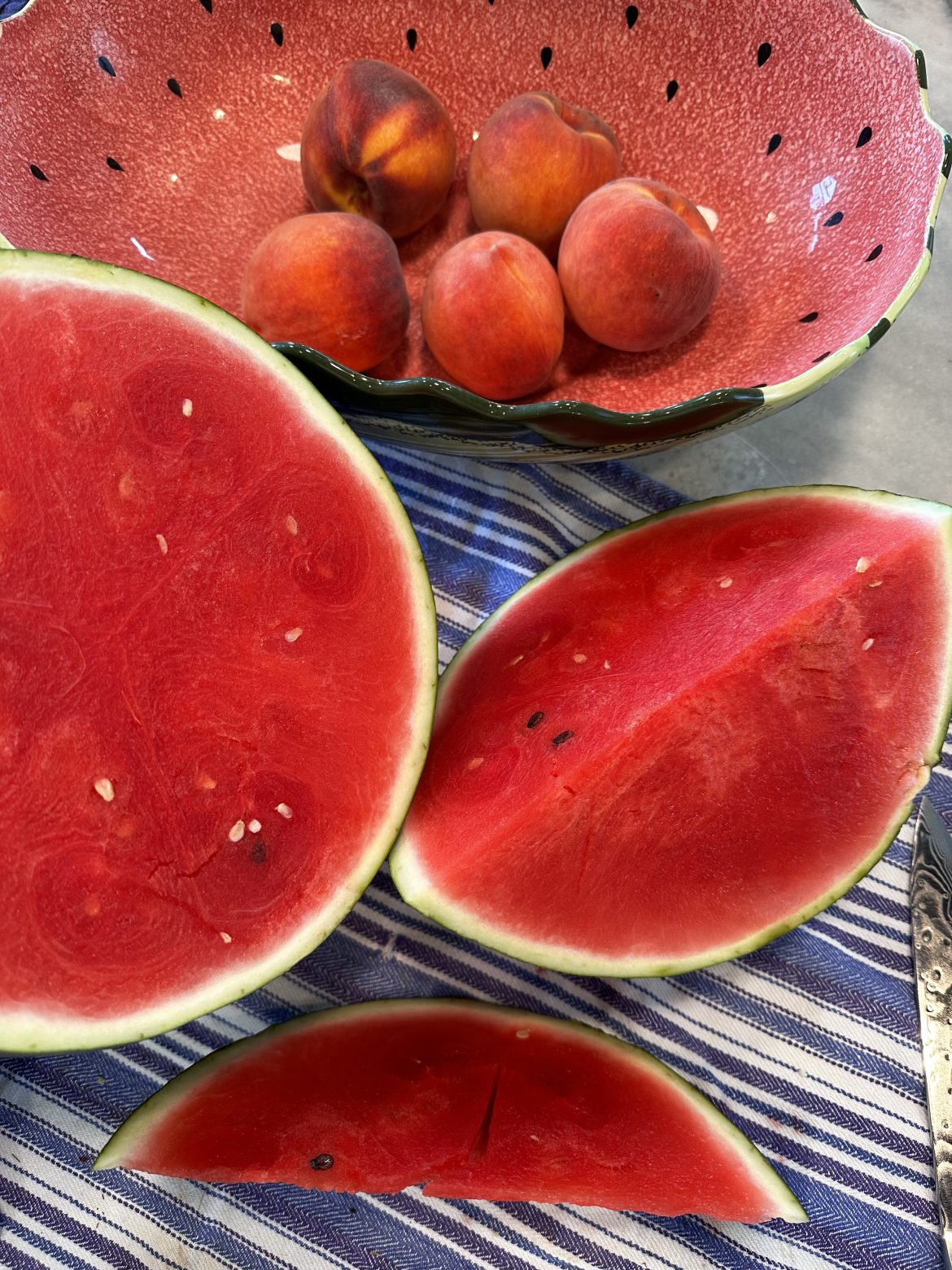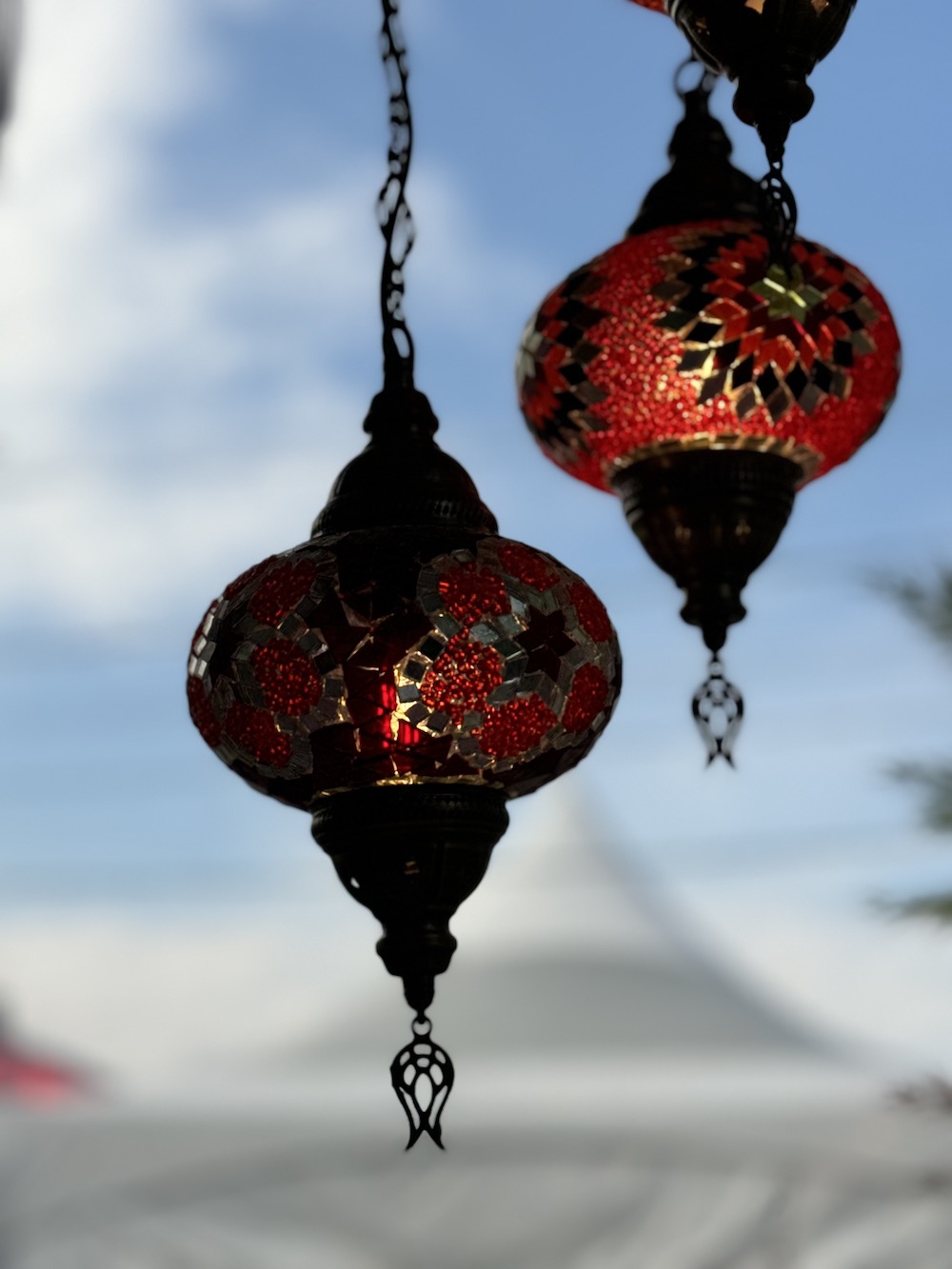In this episode of Liturgical Rebels Brian Edgar explores the concept of a playful attitude towards God and the world, emphasizing the importance of enjoying life as part of having a relationship with God. Edgar highlights the need to integrate work and play, challenging the Protestant work ethic that prioritizes productivity over creativity and imagination. He reminds us that the biblical images of the eternal kingdom of God emphasize childlike play and joy. Edgar’s book, ‘The God Who Plays,’ offers a refreshing perspective on Christian faith and spirituality. In this conversation, Brian Edgar and Christine Sine discuss the concept of play and its significance in various aspects of life, including work and worship. They explore the idea that play is not separate from work but can be integrated into it, bringing joy and creativity. They also delve into the notion of worship as a form of play, highlighting the importance of interaction and enjoyment in our relationship with God. Additionally, they examine the idea of suffering as an opportunity for growth and the role of pain in the development of character. Overall, the conversation challenges traditional perspectives and invites listeners to embrace playfulness in all areas of life.
Takeaways
- Brian Edgar’s career has spanned both Australia and the United States, with teaching positions and work in theology and public theology.
- A playful attitude towards God and the world is at the heart of Christian faith, emphasizing the enjoyment of life and a relationship with God.
- The Protestant work ethic, which prioritizes productivity, has often overshadowed the importance of play, creativity, and imagination.
- The biblical images of the eternal kingdom of God focus on childlike play and joy, challenging the notion that suffering and sacrifice are the ultimate goals of the Christian journey. Play can be integrated into work, bringing joy and creativity.
- Worship is a form of play, involving interaction and enjoyment in our relationship with God.
- Suffering can provide an opportunity for growth and character development.
- The concept of play challenges traditional perspectives and invites us to embrace playfulness in all areas of life.BrianEdgar is married to Barbara and they have two adult daughters, a son-in-law and two grandchildren. They live in Melbourne, Australia, and Brian is now retired. He is Professor Emeritus of Asbury Theological Seminary where he taught theology for fifteen years. Prior to that he was Director of Public Theology for the Australian Evangelical Alliance and Dean and lecturer at the Melbourne School of Theology. Amongst other writing Brian is author of a short series of three books which indicate what became his primary theological and spiritual interest: God is Friendship: A Theology of Spirituality, Community and Society (Seedbed, 2013), The God Who Plays: A Playful Approach to Theology and Spirituality (Wipf and Stock, 2017) which received a Merit Award in Christianity Today’s Book of the Year and Laughter and the Grace of God: Restoring Laughter to its central Role in Christian Spirituality and Theology (Wipf and Stock, 2019).
As an Amazon Associate I receive a small amount for purchases made through appropriate links. Thank you for supporting Godspace in this way.
by Christine Sine
Last Friday I sat down to write my Meditation Monday and my mind went blank. I had no idea of what my intended topic was. I had so many disconnected thoughts circulating in my brain that it was impossible to focus on one alone.
It’s something that happens to all of us so I thought I should treat it as though it were a gift from God rather than a liability. That made me realize that the best place to start my morning was by exercising the parts of my brain that were still functioning properly and do a little research on the way I felt.
The most common causes of blank mind are anxiety, lack of sleep, medication, change and feeling overwhelmed. This morning I felt I could blame all of those. My lack of sleep and feeling overwhelmed were the major culprits. I suffer from jumpy legs and have experienced several nights lately in which leg pain plus spasms made sleep very difficult. Hopefully it will be relieved by changes in my thyroid medication. On top of that I am still struggling with my brother’s death and other pressures in my life.
While there is a rare condition caused by severe trauma called “blank mind syndrome” occasional mind blankness like I experienced is not something to be afraid or ashamed of. In fact, according to Janis Leslie Evans in What is Mind Blanking? Tips to Get Rid of that Foggy Feeling. it helps to share our problem with others, laugh at ourselves and reset our goals, which is exactly what I decided to do this morning. I’m relishing my blank mind because it has led me into a new area of research, and taught me some new fun facts. It really is a gift and not a liability.
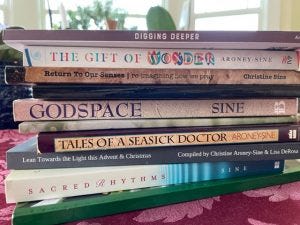
Evidently revisiting a sample of what we wrote or created in the past to remind ourselves of how productive we have been and can be again is helpful. “You are the same person with the same skills” What a great idea I thought. How rarely we remind ourselves of what we have accomplished and applaud ourselves for our productivity. So I picked up a copy of The Gift of Wonder intending to read some of my favourite portions and exercises but I didn’t get past the first chapter. “What do I enjoy doing that makes me sense God’s pleasure?” I wrote and I realized that was God’s word for me again today. God takes delight in us and what we accomplish and I don’t know about you, but I rarely take time to acknowledge that. So I stacked up the books I have written and thanked God for them. I looked through some of my prayer cards, and admired my Digging Deeper garden which still sits on my desk. Finally I hurried out to the garden which is still ablaze with summer colour. I picked the first of our large tomatoes and admired the beauty of my dahlias. Then I harvested some basil and walked inside with the wonderful aroma still clinging to my clothes.
When blank brain sets in do some deep breathing exercises, center your attention outside of yourself. Take notice of your environment with the help of your senses Evans suggests so now I sit breathing slowly in and out aware of the fragrance of God, all around me. It clings to us at all times yet we rarely pause to notice. Now as I breathe, that wonderful fragrance relaxes me, I collect my thoughts and allow my memory to do its job.
So when blank brain sets in, take some deep breaths and allow the spirit of God to guide you. Like me I am sure you will be able to say “Wow, I think this might be what God wanted me to write about after all.”
NOTE: this post is derived from one I wrote a couple of years ago on Godspacelight.
Happy Birthday to my amazing husband Rob Lewin, who proposed to me on this day, forty years ago, while having a romantic birthday dinner overlooking Lake Union at the Americas Cup restaurant in downtown Seattle!
Happy National Book Lovers Day! AND
Happy International Day of the World’s Indigenous People
In celebration of these last two, I highly recommend getting a copy of the First Nations New Testament
We have been using it in our house church, thinplace, for the past year and it has enhanced our understanding and inspired our study of the Gospels.
We listen to the passage ( lectio divina ) in three versions with three voices. We now use the NIV, The Message, and the First Nations Translation during our gatherings. We tend to follow the lectionary each week, so this week we were continuing to hear about Jesus being the BREAD of Life. The Gospel for this Sunday is from John 6:41-51
JOHN 6: 41-51 FIRST NATIONS
41Upon hearing this, the Tribal Members complained, “Who is this ‘Bread from the spirit-world above’? Is this not the son of He Gives Sons (Joseph)? We know who his mother and father are. How can he say ‘I came down from the spirit-world above’?”
43“Stop grumbling to each other,” he answered. “The only ones who come to me have been drawn by my Father. These are the ones I will bring back to life at the end of all days. The Sacred Teachings from the prophets of old tell us, ‘There will come a time when the Great Spirit will instruct everyone.’ That is why the ones who hear and listen to the Father come to me.
46“The only one who has seen the Father is the one sent from the Great Spirit. This one has clearly seen the Father. I speak truth from my heart, the ones who trust in me have the life of the world to come that never fades away, full of beauty and harmony.
48“I am the bread that gives this life. Your ancestors ate bread in the desert wilderness, and they died. Here, standing before you, is the bread that comes down from above. The ones who eat this bread will not die. I am the living bread from above. The ones who eat this bread will live beyond the end of all days. And this is the bread that I will give as a gift to the world—my human body.
I am struck by verse 47 in this translation…THE BREAD….is full of beauty and harmony. Last week verse John 6: 33 also included…beauty and harmony.
33 This bread gives the life of beauty and harmony to the world.”
34 “Honored One,” they said, “from now on give us this bread.”
35 Creator Sets Free (Jesus) smiled, held out his arms to them, and said, “I am the bread of life that came down from the spirit-world above. The ones who come to me will hunger no more. The ones who trust me will thirst no more.”
This the Jesus I have come to understand! Jesus brings beauty and harmony to the world!
I so want to live like this in our messy world. I so want to bring beauty and harmony and help others to see that this is the way of Jesus! not hate, not fear, not bitterness and anger! not judgement… or who is in or out, but BEAUTY and HARMONY!
I also love that the First Nations Bible gives Jesus the name…CREATOR SETS FREE! This gives me life. Jesus truly does set us free!
Why is it that we settle for old, stale bread? Why is it that we settle for bread that is fake, bleached and sits on a shelf in a plastic wrapper, rather than the LIVING BREAD that comes down from heaven bringing beauty and harmony?
Sadly I too often I settle for wonder bread rather than sour dough. Bread that has a living Mother.
READ THE PASSAGE AGAIN
What speaks to you today? What is the Holy Spirit highlighting for you? What do you notice from the passage that you didn’t notice before? What questions came up for you today?
Put yourself in the scene, what would you be thinking or feeling?
What have you been complaining about lately? Talk to Jesus about this and let him hold it for you. We have you tasted lately that made you pause and say that God is Good?
Why do we settle for stale bread rather than the good stuff?
How can you experience more of the beauty and harmony of Jesus this week?
How can you bring that beauty and harmony into your world?
How do you need to be fed by the Bread of Life?
PRACTICE:
Take some bread, make some toast or a sandwich notice the texture, smell the rich scent. Taste it. Enjoy it . Thank Jesus for being BREAD for you! As you eat BREAD this month. RECEIVE THE BREAD, JESUS who holds out his arms to you and loves you as you are! Allow Jesus to fill you with beauty and harmony and love! Take time to notice the taste of your food. Eat slowly and thank Jesus for all the good food you get to eat. If you have the time, make some bread and make enough to share it with a friend or neighbor. That’s a great way to bring beauty into our world!
LISTEN:
Oh, Great Spirit,
whose voice I hear in the wind,
whose breath gives life to all the world.
Hear me; I need your strength and wisdom.
Let me walk in beauty,
and make my eyes ever behold the red and purple
sunset.
Make my hands respect the things you have made
and my ears sharp to hear your voice.
Make me wise so that I may understand
the things you have taught my people.
Help me to remain calm and strong
in the face of all that comes towards me.
Let me learn the lessons
you have hidden in every leaf and rock.
Help me seek pure thoughts
and act with the intention of helping others.
Help me find compassion
without empathy overwhelming me.
I seek strength, not to be greater than my brother,
but to fight my greatest enemy, Myself.
Make me always ready to come to you
with clean hands and straight eyes.
So when life fades, as the fading sunset,
my spirit may come to you without shame.
Mystic and visionary, Black Elk of the Lakota Tribe
embraced the teachings and faith of “God with us”
(Creator sets Free) later in life. He was a leader, a wise
man, and lived harmoniously with nature. Black Elk
witnessed the ending of the Lakota way of life at the slaughter at Little Big Horn.
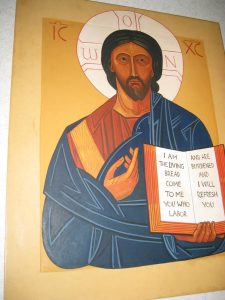
I am looking out on a grey Seattle morning. Even though we are expecting some hot weather later this week, I am very aware that the seasons are changing, the days are getting shorter and we are heading inexorably towards autumn. Change is the most consistent truth that life offers us. Nothing remains the same for long. We need to welcome and embrace it. If we dig in our heels and try to avoid the changes that are coming, whether it be in the seasons of the year, in our own aging bodies or in the political and environment changes that surround us, it only makes life more challenging.
This week has been a very satisfying one for me, reinforcing my belief that grief and gratitude must walk hand in hand. My Meditation Monday – When Grief and Gratitude Embrace was one of the most popular I have posted. Many of you commented on how it spoke to you in the midst of the grieving in your own heart, not just grieving loved ones but also fractured relationships and the horrors of violence and climate catastrophes. Others commented on how it assisted the writing sermons for next week, as the Old Testament lectionary reading was about David mourning Absalom.
Thank you for your feedback and encouragement. It really helps me shape who I am and what I do.
Our recent Liturgical Rebels episode Beyond Church Walls with Martin Poole was also extremely popular. Martin is an incredibly creative worship curator and the author of Church Beyond Walls. His ideas inspire all of us to experiment with new and creative ways to worship and draw close to God. Many of us are very aware that same old, same old doesn’t work any more and people like Martin help lead the charge for change. It came to mind at our community meeting last night when one of our members said “my running and hiking are more church to me than being in a building.” Then I read a comment by Australian theologian Mike Frost quoting Nicola Olyslagers, Australian high Jumper “For me, it’s like being in a church. My worship might not be my singing, it’s in my feet jumping over a bar.” He commented that it mirrored Eric Liddell’s words from the 1924 Paris Olympics, “God made me fast. And when I run, I feel His pleasure.” God is all around us, in everything we do and it is often in the activities that give us joy and satisfaction that we feel closest to our creator. I love how The Liturgical Rebels is helping to stretch people’s imaginations to embrace new ways to worship and draw close to God.
I loved Lilly Lewin’s Freerange Friday: Taste And See. She lives in Nashville where the summer is in full swing and she is enjoying the delights of her local farmer’s market and locally baked bread. Makes me want to fly to Nashville for the weekend. She reminded us that July 31st the church calendar honored the death of St. Ignatius of Loyola. Who gave us the EXAMEN…a wonderful prayer practice to help us notice and recognize where we’ve seen God along our way.
On August 9th we celebrate The International Day of Indigenous People such an important one to highlight. As Rachel Taber-Hamilton highlights reminded us in her important post of 2020. Indigenous peoples across the globe share common problems related to the protection of their rights as distinct peoples due to the impact of historical and modern forces of colonialism.
In case you wonder where we find out about days like this to highlighthere are the links to find other possibilities for global celebration days; Celtic saints we have still to hear about, here is the complete list to draw from or this National Days of Observance for the U.S., for the UK and another for Australia. For New Zealand check out this list, for South Africa and for Canada. Looks as though we all have lots to celebrate
My big project at the moment is the new Celtic Advent devotional Following an Unfamiliar Path through Advent. I am enjoying revisiting my Celtic resources, writing daily reflections and incorporating both new and old prayers in the daily offerings. At the same time I am getting ready to host several Celtic inspired musicians, theologians and spiritual directors on Liturgical Rebels. I am having so much fun revisiting this material that I want to try something new. I would like to enlist your help in the process. For the rest of this month, I will share excerpts from my new book with all current paid Substack subscribers to enjoy and comment on. Each week I’ll post an update of my progress and invite your feedback. I’ll also answer any questions you may have about my stories and creative choices. To participate, all you have to do is join the paid subscription to my Substack (either monthly or annually), and you’ll automatically get the updates. You can do this by clicking the link below. I’ll post my first writing update later this week.
Don’t forget too to save the dates for my upcoming webinars. Introduction to Celtic Christianity September 7th; Preparing for Advent November 16th. We are working to simplify the ways people register and hope to have these open for you to sign up next week so don’t forget to save the dates.
Let me end with one of my favourite Celtic prayers attributed to Brigid of Kildaire, which I used at many of our Celtic retreats and on other occasions for a grace before meals.
I should like a great lake of finest ale,
for the King of Kings
I should like a table of the choicest food,
for the family of heaven.
Let the ale be made from the fruits of faith,
and the food be forgiving love.
I should welcome the poor to my feast,
for they are God’s children.
I should welcome the sick to my feast,
for they are God’s joy.
Let the poor sit with Jesus at the highest place,
and the sick dance with the angels
God bless the poor,
God bless the sick,
and bless our human race.
God bless our food,
God bless our drink,
all homes, O God, embrace.
Many blessings
Christine Sine
photo by Lina Kivaka on pexels.com
I have done a lot of grieving this week. I have also expressed a lot of gratitude as I remembered my brother Nick who meant a lot to me throughout my life. He would have loved this floral display in my garden which I felt I shared with him as I walked around yesterday. Part of what I did over the weekend was revisit this article which I found very helpful both when I wrote it and now as I reread it. Many of us struggle to express our grief and so I thought you would appreciate rereading it too.
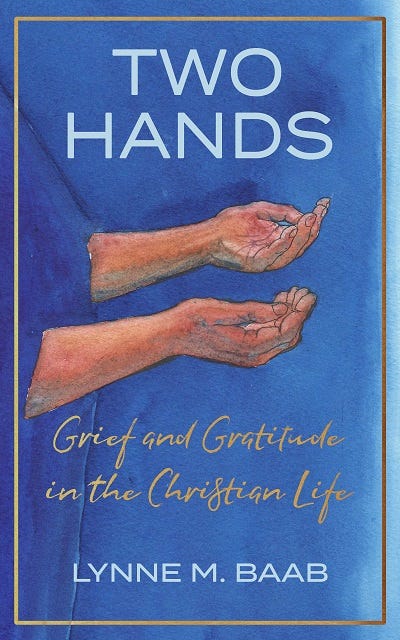
When Lynne Baab wrote her book Two Hands: Grief and Gratitude in the Christian Life, it was the first time I considered the important balance between grief and gratitude. It was one of the most impactful books I read in 2021. Part of what it made me realize is that we cannot talk about gratitude without also talking about grief. We cannot talk about grief without allowing gratitude to well up within us. We cannot develop effective rituals for expressing gratitude without creating equally powerful rituals for processing grief.
In her book Lynne gleaned from an equally important article The Geography of Sorrow – Francis Weller on Navigating Our Losses – by Tim McKee, based on an interview with Francis Weller about his book The Wild Edge of Sorrow. Reading both the article and the book resulted in me asking important questions of myself. It is not just about grieving for what we have lost in the pandemic or grieving for our world of violence and ecological disaster. Most of us hold huge wells of unexpressed grief inside us because we live in a culture where grief is unwelcome, something we need to get over quickly. We are ashamed to grieve. As a consequence we are prone to addiction, depression, violence, suicide, possibly cancer, heart disease and I would add PTSD.
The work of the mature person is to carry grief in one hand and gratitude in the other and to be stretched large by them. How much sorrow can I hold? That’s how much gratitude I can give. If I carry only grief, I’ll bend towards cynicism and despair. If I have only gratitude, I’ll become saccharine and won’t develop much compassion for other people’s suffering. Grief keeps the heart fluid and soft, which helps make compassion possible. (The Geography of Sorrow – Francis Weller on Navigating Our Losses – by Tim McKee)
So a few important gems I picked up from the article –
First – We need rituals of grieving and these rituals should be communal. This doesn’t mean we don’t go off and weep in solitude, but after we do we should be welcomed back into a group where we can pour out and empty our sorrows together in an environment of comfort and mutual support. Being with good friends over the weekend, sharing photos and stories about my brother were very therapeutic for me. I also love the rituals using a cup that Lilly Lewin regularly introduces us to. She uses these in the Thinspace Nashville services she conducts each week as well as for her personal practices. Her recent Freerange Friday: God Holds Our Tears provided another important ritual using a pitcher of water that is also very profound. These are the types of practices we all need to help us maintain the grief/gratitude balance.
In healthy cultures one person’s wound is an opportunity for another to bring medicine. But if you are silent about your suffering, then your friends stay spiritually unemployed. In Navajo culture, for example, illness and loss are seen as communal concerns, not as the responsibility of the individual. Healing is a matter of restoring hozho – beauty/harmony in the community. The Geography of Sorrow – Francis Weller on Navigating Our Losses – by Tim McKee
Second – we should approach grief with reverence, engaging it, sitting with it, mulling it over and recognizing it is worthy of our time . I think this is particularly important not just for me at the moment but for all of us who are grieving the violence and destruction in our society. We all came out of the COVID pandemic with a load of grief weighing us down. Since them we confronted the horrors of war in Ukraine and Israel/Palestine, earthquakes in Turkey and Afghanistan and the climate crisis that overwhelms us. We are encouraged to feel we should get over our grief quickly, or pretend there is no grief weighing us down. We are encouraged to get back to normal, maybe go on a shopping spree and enjoy life again. Grief is seen as something to be ashamed of, not something to embrace. It is easy to dismiss the need for rituals of grief especially as the consumer culture hypes up for the Christmas season in the next couple of months. After all isn’t Christmas meant to be “the happiest season of all?”
Here are a few of my suggestions on rituals that can help us process our grief and move towards gratitude in the coming months:
- Sit around the table with your family or a few close friends and talk about those things from the past that still need to be grieved over. I have sat around tables with a cup of tea in the most unlikely circumstances grieving together with friends and family. I still vividly remember when I was in practice in Christchurch New Zealand and and a teenager died of cancer. I sat, with his family as we created a circle around his body and they shared stories about his life. Just talking about these together can bring a measure of healing. I also vividly remember sitting with First Nation’s friend Richard Twiss and a very culturally diverse group in a teepee listening to the grief of rejection many of those present had suffered. Discuss other ways that you could support each other as you process your grief.
- Plan a celebration for All Saints’ Day or Day of the Dead coming up at the beginning of November. Celebrating, grieving and giving thanks for those who have gone before are all interwoven in these important days on the church calendar. I love the ribbons of remembrance that our church creates every year. We all have an opportunity to write the names of our loved ones on ribbons that later are woven around the altar rail or hung around the church.
- Plan a Blue Christmas celebration. Here on Godspace we provide a growing set of resources to help with this celebration. During the COVID lockdown, we participated in a powerful and extremely meaningful online Blue Christmas service where we interwove liturgy, creativity, scripture and music together.
- Plan regular retreat days over the next few months to help you slow down, grieve and find that much needed balance between grief and gratitude. Part of the wonder of the Advent and Christmas story which we are quickly moving towards is the recounting of both joy and tragedy. If you follow the liturgical calendar you know that December 28th is Holy Innocents Day when we commemorate the execution of the innocent, male children in Bethlehem as told in Matthew 2:16. It is an uncomfortable day that I always want to skip over, but this year I know it is worthy of remembering. So many innocents have died in the last year from hunger, disease, violence and natural disasters. This story gives us the foundations for grieving our own losses. It is just as easy for us to skip over the tragedy because of our desire to focus on the joy. This year we need to make space for both.
- Write or read poetry, create a piece of artwork, take a photo that juxtaposes grief and gratitude. This was one of my responses to the horrors going on in Israel/Palestine. I wrote this poem which flowed out of my heart as I look at what is happening and was overcome by grief. It was inspired by Matt 5:43-47 and Colossians 1:18-20 in The Message. As I wrote it I found myself giving thanks for the many places in scripture where grief and gratitude come togetherIs our world broken beyond repair?Will we always meet violenceWith more violence?
Death with death?
Hate with hate?
What happened to love?
What have we done with Jesus,
With the One who holds all things together
And promises to fix,
All the broken and dislocated pieces of the universe.
The One who told us:
Love your enemies
Let them bring out the best in you
Not the worst
Live out your God-created identity,
Live generously and graciously towards others.
Be loving in all circumstances.
God is love.
Christine Sine 2023
- Listen to Leonard Cohen’s incredible song Hallelujah which I listen to regularly to help me process some of my grief burden and help me find the silver linings of gratitude often hidden in its midst.
- Journal about your grief feelings.Read Psalm 130 or similar psalm that begins with grief and ends in praise. Sit in the presence of your feelings of grief and allow God to bring healing. As I did that this week this simple poem grew in my mind. It has grown over the week as I continued to mourn.Nothing can deny the painA loved one’s loss can bring.
Nothing will stem the grief
Of losing one who meant so much.
But memories will always bring
Sparks of joy.
Though they arrive
With grief and longing
We cannot quiet,
They come with smiles
For times of laughter past,
With gratitude for moments shared,
Lodged forever in my heart.
NOTE: As an Amazon Associate I receive a small amount for purchases made through appropriate links above. Proceeds go toward the my work on Substack.
PSALM 34
I will extol the Lord at all times;
his praise will always be on my lips.
2 I will glory in the Lord;
let the afflicted hear and rejoice.
3 Glorify the Lord with me;
let us exalt his name together.4 I sought the Lord, and he answered me;
he delivered me from all my fears.
5 Those who look to him are radiant;
their faces are never covered with shame.
6 This poor man called, and the Lord heard him;
he saved him out of all his troubles.
7 The angel of the Lord encamps around those who fear him,
and he delivers them.
8 Taste and see that the Lord is good;
blessed is the one who takes refuge in him.
9 Fear the Lord, you his holy people,
for those who fear him lack nothing.
August is here! And in Nashville, Summer is in full force with its heat and humidity and thunder storms.
This means that summer food is here too. And the farmer’s markets are filled with the beauty and wonder of summer foods! We have a wonderful farmer’s market each Saturday morning at Richland Park. It makes me love my neighborhood more each time I go! I just love the diversity of people and ages! and the joy! Even when it’s way too hot, people are smiling at the farmer’s market! They just buy more lemonade and popsicles! (Ice lollies).
This week I was in line waiting to buy peaches, and I saw a gentleman with a basket filled beautifully wrapped packages. I asked him what they were and he said it was the best bread in the city! So of course I asked which stand had this bread and I went and bought a loaf! We don’t usually eat a lot of bread at our house these days, but this BREAD was so good! And we have enjoyed toasting a fresh slice with butter or jam, almost every day! TASTE and SEE that the LORD IS GOOD!
On Wednesday, July 31st the church calendar honored the death of St. Ignatius of Loyola. St. Ignatius teaches us that we can find God in all things! This doesn’t mean we are worshiping the things, or that we’ve become pantheists…it means that if we embrace child like wonder, and have eyes to see and ears to hear, we can truly experience God in ALL THINGS!!! Especially in good food!
St. Ignatius also gave us the EXAMEN…a wonderful prayer practice to help us notice and recognize where we’ve seen God along our way.
The beginning of a new month is a great time to start again with noticing what God is up to in our lives. And to do an Examen of our last week and/or month.
Where have we see Jesus at work? Where have you noticed the wonder of God?
What are the gifts you received last month ? What did you notice? Take time to be thankful.
Where did you miss God? How did you miss Jesus last month? Think about times you really felt distant or lost it…Where do you need forgiveness from Jesus? How do you need to forgive yourself? Talk to Jesus about this.
What good gifts, gifts of Grace, do you want to take into this new month with you?
You might find a song that reflects what you want for the month, or create a collage or art piece that inspires you. Find a poem or write a prayer to carry with you in August to give you the childlike hope and wonder you might need in this new season. Or even memorize Psalm 34.
And don’t forget to play and have fun!
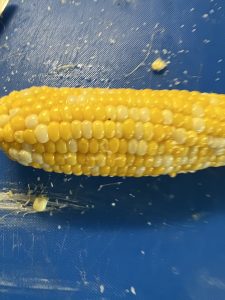
How do you eat corn on the cob?
And speaking of fun! On Tuesday night at thinplace, I asked how everyone ate their corn on the cob. Do they eat it like a typewriter in rows? Did they eat it round and round? Or did they eat it randomly like a mouse?
To the chagrin of my husband, I eat my corn in random fashion….this was almost a deal breaker when we were dating! But just the fun of noticing how we eat this summer treat ,brought a smile to our zoom screen!
We tasted and saw that God is so fun and so Good!
So how do you eat corn? Have you taken time to notice?
What are the foods that remind you of summer?
What tastes send you right back to your childhood?
Peaches
Watermelon
A tomato just picked from the garden
Corn on the cob
Basil and Mint
Popsicles/Ice Lollies
Ice Cream
Today I opened a watermelon and sprinkled a piece with salt…that childlike wonder exploded!
In this week’s Gospel, Jesus says that he is the BREAD OF LIFE. JOHN 6:24-35
What am I hungry for this month?
How do I need to be fed by Jesus?
READ this passage in the FIRST NATIONS BIBLE
JOHN 6: 24-35
22 It was now morning, and the crowd of people on the other side of Lake of Circle of Nations (Sea of Galilee) began to look for Creator Sets Free (Jesus), for they knew there was only one canoe and that he did not go with his followers.
23 Just then some canoes arrived from Rolling Water (Tiberias) at the same place where Creator Sets Free (Jesus) had given thanks for the frybread and fed them all.
24 When they could not find Creator Sets Free (Jesus) or his followers, they climbed into the canoes to go to Village of Comfort (Capernaum) to find him.
25 When they arrived on the other side and found Creator Sets Free (Jesus), they asked, “Wisdomkeeper, when did you get here?”
26 Creator Sets Free (Jesus) ignored their question and said to them, “Listen closely to my words, you are not looking for me because of the powerful sign you saw, but only because you filled your bellies with food.
27 Why are you working so hard for food that fades away? You should work for the food that gives you the life of the world to come that never fades away. The True Human Being will give you this food, for he has the Father’s full approval.”
28 “What does Great Spirit require from us,” they asked, “so we can do what he wants and have his approval also?”
29 “Here is what he wants you to do,” he answered, “put your trust in the one he has sent.”30 “What powerful sign will you show us, that we should trust in you?” they asked. “What sign will you perform?
31 When our ancestors were wandering in the desert they ate bread, just as the Sacred Teachings tell us, ‘From the spirit-world above he gave them bread to eat.’”
32 “Listen closely,” Creator Sets Free (Jesus) answered. “Drawn from the Water (Moses) did not give you the bread from the spirit-world above. It is my Father who gives you the true bread that comes down from the spirit-world above.
33 This bread gives the life of beauty and harmony to the world.”
34 “Honored One,” they said, “from now on give us this bread.”
35 Creator Sets Free (Jesus) smiled, held out his arms to them, and said, “I am the bread of life that came down from the spirit-world above. The ones who come to me will hunger no more. The ones who trust me will thirst no more.”
I love verse 33 ! 33 This bread gives the life of beauty and harmony to the world.”
How do you need more beauty and harmony in your world? Can you let JESUS be this kind of bread for you?
Sadly, I often settle for day old, stale bread…. rather than the BREAD that came from heaven.
This week, in this new month, I want to taste the BREAD that brings beauty and harmony! I want to receive and be nourished by the BREAD OF LIFE! How about you?
Use this practice to help you!
Take some bread, make some toast or a sandwich notice the texture, smell the rich scent. Taste it. Enjoy it . Thank Jesus for being BREAD for you! As you eat BREAD this month. RECEIVE THE BREAD, JESUS who holds out his arms to you and loves you as you are! Allow Jesus to fill you with beauty and harmony and love! AMEN
Its been another week of extraordinary happenings and events that it is hard to get our heads around. I was in Canada for the start of the Olympic Games and enjoyed watching the spectacular opening ceremony that blew away all preconceptions of what an opening ceremony is meant to look like. As I shared in my Meditation Monday: Who Is Welcome At Your Table? I was saddened by the controversy that arose about the maybe/maybe not image of the Last Supper and the animosity it aroused in so many Christians. What happened to love I wonder? Surprisingly, this was one of the most popular posts I have ever written.
My brother Nick died on Thursday and so the last few days I have struggled with the emotions of loss, grief but also gratitude as I remember the wonderful, loving brother he was and the many ways in which he influenced my life. He inspired my gardening and photography in particular and now I feel he walks with me every time I wander round my plants or take a photo. Our trip to Canada and visit with good friends was very therapeutic for me. I took some of my photo albums in which he stars and loved sharing stories about our life together with them. Reminiscing is such an important part of grieving and I know I will do much more of it with my other brothers and their families when I visit Australia in October.
Today we launched the 13th Episode of Liturgical Rebels – Beyond Church with Martin Poole. Martin is a very creative worship curator and the author of Church Beyond Walls. As the founder of Beyond he initiated and curated hundreds of public art events on the seafront, in parks, in pubs and theatres and is the inventor of the Beach Hut Advent Calendar which ran for 11 years along Hove promenade. This is a fascinating episode that you won’t want to miss especially if you are looking for intriguing ways to reach out to your community with the message of Christ.
Each Friday, on Substack I either post a spiritual practice or our latest episode of The Liturgical Rebels. Last Friday, because of my travels and the loss of my brother, I decided to repost one of my favourite practices that I talk about in The Gift of Wonder – The Spiritual Practice of Doodling. These kinds of freeform activities are good for us in many ways. They help stir our creativity, reduce stress and often enable us to move more deeply into intimacy with God. I love using doodling as a spiritual practice and hope that you enjoyed the post as much as I enjoyed revisiting it last week. I am amazed at how easy it is to forget the practices that once sustained us. My use of doodling is a great example of that.
In Freerange Friday: Looking for Hope In A World of Fear Lilly Lewin talks about celebrating her father’s 95th birthday and asks some provocative questions. How do you express gratitude? Where do you find hope? Such good questions for us to revisit frequently as we negotiate the ups and downs of life.
We did not have a post for World Friendship Day yesterday, (July 30th) but have had several great ones over the last couple of years that you might like to revisit. A couple of years ago June Friesen shared about the history of World Friendship Day and the importance of it for all of us today especially as we seek to show love for all of God’s family and “friends” around the world. Last year Carol Dixon in her International Friendship Day post shared the delight of the many international friendships she has enjoyed and encourages all of us to think of the rich array of friends from around the world that we might like to give thanks for.
I appreciate your prayers as I negotiate my brother’s death and try to write my Advent devotional book Celtic Advent: Following an Unfamiliar Path at the same time. Not surprisingly my original outline suggestion did not work and so I am looking at other ways to integrate the lives of the Celtic saints into this season. Having a lot of fun doing and delving into my Celtic books as I do it. Don’t forget Celtic spirituality will also be the focus of the Liturgical Rebels podcast over the next few months. Starting with Celtic musician Jeff Johnson, followed by theologian John Phillip Newell and and spiritual director Christine Valters Paintner, this should be an interesting series. I am still working on lining up a poet and an artist in the Celtic tradition that I think will inspire us all.
Let me end with this poem I wrote as a tribute to my brother and the deep and abiding friendship we enjoyed.
Nothing can deny the pain
A loved one’s loss can bring.
Nothing will stem the grief
Of losing one who meant so much.
But memory will always bring
A spark of joy.
Remembrances grow stronger
As we share.
Smiles for times of laughter past,
Are lodged forever in my heart.
Many blessings
Christine Sine
As an Amazon Associate, I receive a small amount for purchases made through appropriate links.
Thank you for supporting Godspace in this way.
When referencing or quoting Godspace Light, please be sure to include the Author (Christine Sine unless otherwise noted), the Title of the article or resource, the Source link where appropriate, and ©Godspacelight.com. Thank you!

